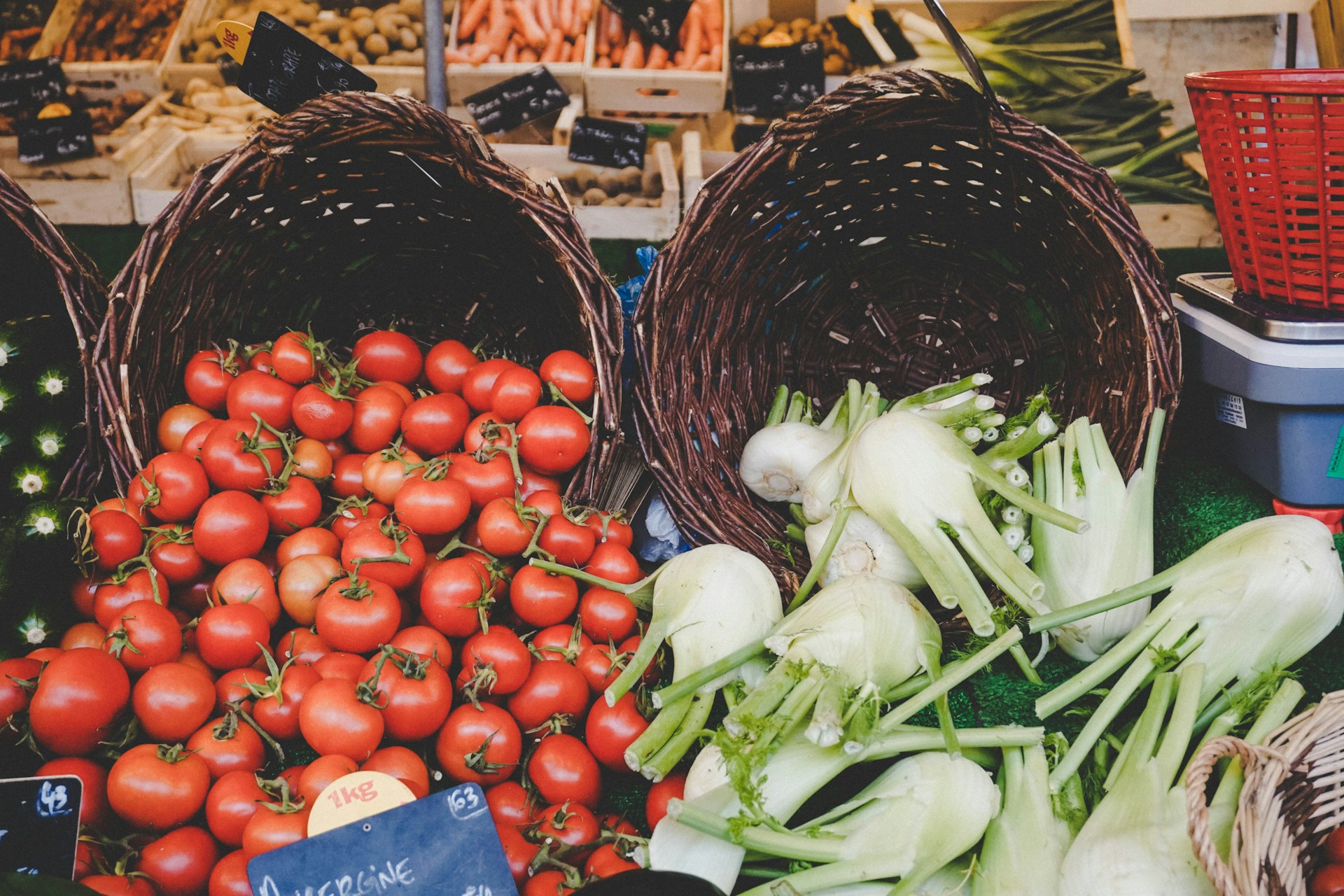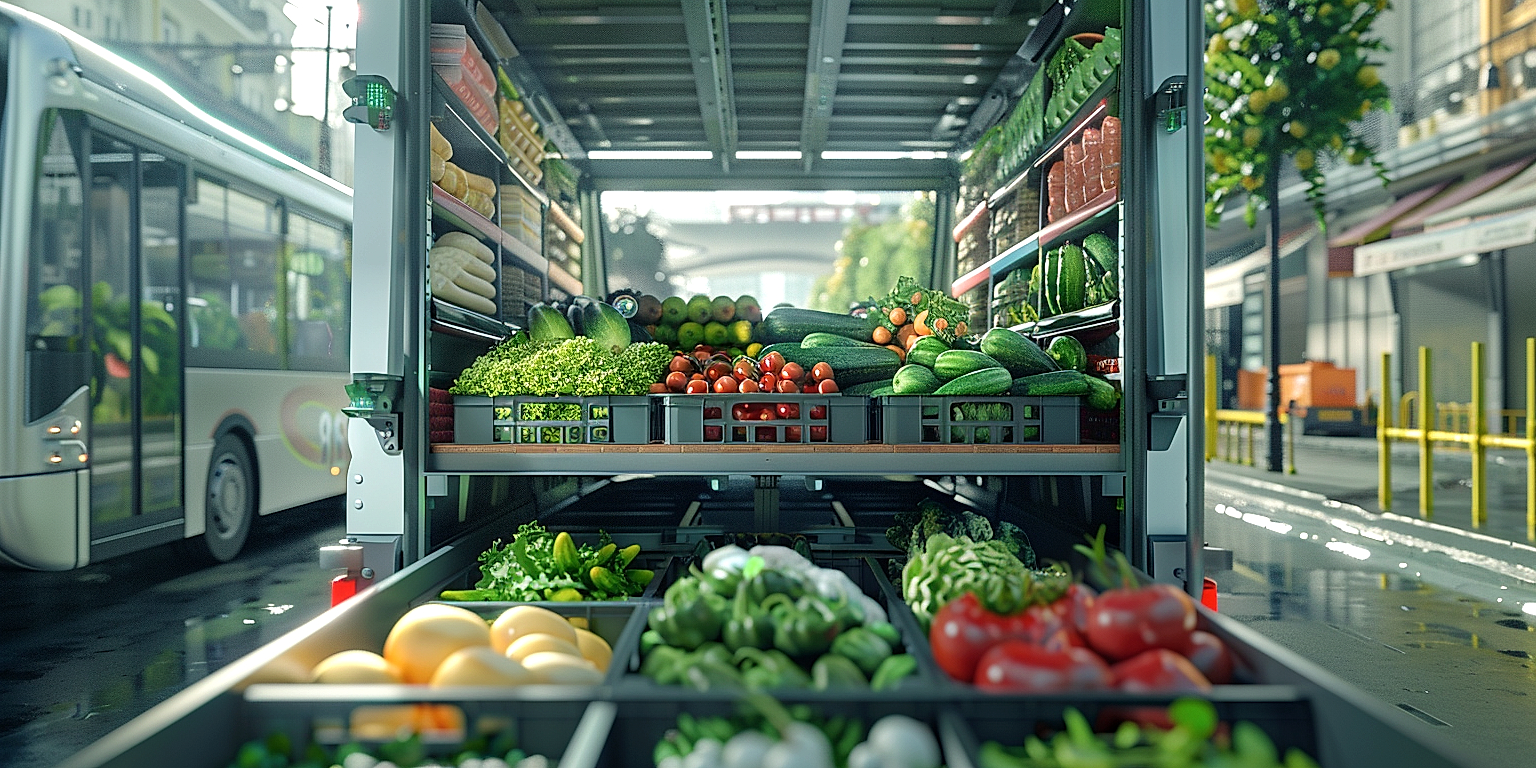Managing the expenses associated with produce distribution transport is one of the most critical aspects in the success of a logistics-based business.
In today’s fast-paced world, the need to deliver fruits and vegetables in their freshest and top-notch condition has never been greater.
However, achieving this while keeping costs down could prove to be a significant challenge.
This article aims to address this dilemma specifically in the intricate field of fresh produce distribution.
Through expert insights, we will delineate proven cost-effective strategies in transport logistics.
Understanding and implementing such methods can propel businesses toward more efficient operations and improved financial outcomes.
Cost-cutting Strategies For Produce Distribution Transport
1. Implement Fuel-Efficient Driving Methods
Cost cutting and efficiency are fundamental components for any successful business. This is highly applicable in the context of produce distribution transport, where fuel consumption often accounts for a large portion of operating costs.
Fuel-efficient driving methods can hence drastically reduce operational costs, while also promoting sustainability and responsible business practices.
One of the chief strategies to promote fuel efficiency is preventing rapid acceleration and hard braking. Smooth, steady driving has been proven to consume less fuel.
This is often termed as ‘eco-driving’. By maintaining a steady speed and using cruise control, drivers can optimize their fuel use.
Apart from cost-cutting, fuel-efficient driving also mitigates environmental impacts significantly, reinforcing the importance of sustainability in business operations.
Trainings and incentives may encourage drivers to adopt these eco-driving methods more readily.
For example, setting up a rewards program for the most fuel-efficient drivers can positively reinforce desired behaviors.
Moreover, educating drivers on the mechanics of how speed impacts fuel consumption can highlight the importance of driving at optimal speeds for fuel efficiency.
Another fuel-efficient technique can be efficient gear shifting in manual vehicles, which can help reduce fuel consumption by as much as 15%.
Driver training programs to build and reinforce these skills can be an invaluable investment for reducing fuel costs.
Moreover, technologies like engine control units (ECU) can control the engine’s fuel injection, promoting better fuel efficiency.
They can optimize the engine’s performance, significantly reducing fuel consumption and, consequently, costs.
Other practices like maintaining optimal tire pressure and not letting the engine idle unnecessarily can also maximize fuel efficiency.
In essence, implementing fuel-efficient driving methods involves both driver training and using the right technologies.
Each step towards fuel-efficient driving directly translates to cost savings, making it an essential strategy for produce distribution transport.
2. Optimize Delivery Routes for Reduced Mileage
In the context of cost-cutting strategies, optimizing delivery routes can significantly reduce mileage thus lowering transportation expenses.
This approach not only saves on fuel costs, but also aids in extending the life span of the transport vehicles.
Essentially, efficient route planning entails finding the shortest and most convenient paths between the different delivery points.
In the process, the fleet gets to avoid high traffic areas, unnecessary detours, and unfavourably long routes, which all contribute to increased mileage and fuel consumption.
Optimal route planning is not merely about reducing the distance covered; it also brings into account potential traffic congestions, road works, or any constraints that may increase the time spent on the road, thus boosting fuel usage.
It’s also worth noting that advanced planning of routes reduces the likelihood of running into delays or complications that result in additional costs.
This can be especially beneficial for time-sensitive produce distribution that requires prompt delivery to preserve the freshness and quality of the produce.
A well-executed delivery route optimization strategy also contributes to improved customer satisfaction.
Punctual deliveries and reduced product spoilage rates ultimately lead to happier customers who are more likely to engage in repeat business.
Importantly, in the bid to optimize routes for reduced mileage, companies can leverage technology to facilitate this process.
Modern fleet management software comes equipped with features such as live tracking, predictive analytics, and route optimization algorithms to effectively plan journeys and adjust routes in real-time.
The use of such technological solutions can drastically reduce the complexities involved in route planning and ensure maximum efficiency.
In summary, optimizing delivery routes through meticulous planning and the use of technology, provides a practical route towards reducing mileage and bringing down the transportation costs in produce distribution.
While the primary aim of this practice is cost reduction, other fringe benefits such as improved customer satisfaction, timely deliveries, and prolonged vehicle lifespan make it a crucial consideration for any entity in produce distribution transport.
3. Consolidate Shipments to Increase Load Capacity
Reducing the cost of produce distribution transport can be achieved significantly by consolidating shipments to increase load capacity.
When we talk of shipment consolidation, it refers to the gathering of smaller shipments and putting them together to form a larger one.
This method is resourceful, particularly for produce distributors who deal with varying sizes of produce orders.
Remember, the ultimate goal is to have each truck running at full capacity to maximize efficiency and minimize costs.
Consolidating shipments allows your vehicles to operate at full load capacity, minimizing the number of trips the trucks need to make and ultimately diminishing your fuel and operational costs.
Increasing load capacity also significantly reduces the frequency of delivery trips, which directly impacts the overall fuel costs. The fewer the trips, the lower the cost of fuel.
This in turn, reduces the wear and tear on your delivery vehicles, adding to cost savings in the long run.
It’s also essential to note that consolidating shipments doesn’t simply mean stuffing as much produce as possible in a single delivery vehicle.
While high load capacity is important, overloading vehicles can lead to damage to both the vehicle and the produce, negating the cost-cutting effect of consolidation.
Therefore, proper load planning and organization are crucial aspects of successful consolidation strategies.
With smart consolidation strategies, it is possible to ensure vehicles are neither overloaded nor under-loaded.
It implies a fine balance must be struck, taking in to account the type of produce, the varying sizes, and weights of shipment orders.
Consolidation software can be helpful in planning and strategizing on how best to carry out consolidation. It helps to maximize load capacity without risking overloading.
Lastly, it’s important to remember that shipment consolidation as a cost-cutting strategy for produce distribution transport not only reduces costs but also leads to efficiency in operations.
This enhances customer satisfaction, which in turn helps to build the reputation of the transport company.
Thus, shipment consolidation strategy should be carefully considered and well implemented by any company aiming to reduce costs in produce distribution transport.
4. Utilize Cheaper Off-Peak Transport Times
Transportation costs significantly impact the overall expenditure in the produce distribution business.
One strategic method to cut costs is to use cheaper off-peak transport times.
Usually, transport companies base their charges on peak and off-peak times, with the latter being substantially less expensive.
Off-peak times refer to periods of lower demand when roads are less congested, leading to quicker delivery times.
Off-peak transport times not only reduce transportation costs but also increase efficiency and sustainability in the delivery process.
By planning deliveries during off-peak times, businesses can benefit from reduced fuel consumption due to less time spent in traffic.
In turn, this reduces greenhouse gas emissions, contributing to the company’s environmental sustainability efforts.
Furthermore, these times often correspond to overnight hours when labor costs can be lower, lending another layer of savings.
It is important to note that switching to off-peak transport times requires a strong planning strategy and flexibility from both the business and the transport companies involved.
Produce needs to be ready for pickup at the stipulated time, and personnel must be available to receive the deliveries at their end.
Moreover, while off-peak transport times can lead to cost savings, it is essential to ensure that this doesn’t negatively impact the freshness and quality of the produce.
Proper storage and preservation methods must be followed to keep the produce fresh during odd hours.
The benefits of off-peak transport times will only have a positive net effect if all aspects are carefully planned and managed.
It might be challenging initially, but with some persistence and adaptability, businesses can capitalize on this strategy to slash transportation costs.
Therefore, off-peak transport times serve as a strategic, cost-effective, and sustainable approach to streamline produce distribution transport.
5. Maintain vehicles regularly to prevent breakdowns.
Maintaining vehicles regularly is an essential cost-cutting strategy in produce distribution transport.
One must understand that routine vehicle maintenance ensures that produce is delivered efficiently and on time, reducing costly delays.
Using vehicles that are in optimum working condition can remarkably enhance fuel efficiency, which can significantly lower transportation costs.
Maintaining vehicles regularly not only lowers direct costs such as repairs and replacements but also reduces the chances of unexpected breakdowns and associated downtime, offering a more efficient produce distribution transport
Also, a vehicle in top shape reduces the likelihood of safety-related incidents on the road, which can also be quite expensive.
Investing in regular vehicle inspection and maintenance services can yield considerable savings in the long run.
Furthermore, it could bring about greater vehicle longevity, meaning companies can utilize their trucks for longer periods without needing to invest in new ones.
Therefore, implementing a proactive vehicle maintenance plan is a practical approach to fuel conservation, cost reduction, and better organizational efficiency.
Proper vehicle maintenance includes regular oil changes, timely part replacements, and also keeping an eye on the tires, fluids, brakes, and engine health.
Companies could save a great deal by catching potential problems earlier, rather than waiting for something to go wrong and then addressing it – a case of prevention being better than cure.
Staff training could also be helpful here; drivers trained in basic preventive maintenance could help identify and report potential issues before they turn into significant problems.
A well-maintained fleet can result in fewer accidents and insurance claims, further reducing costs.
To sum up, the benefits of keeping vehicles in top shape extend beyond immediate savings and affect other essential aspects of produce distribution transport leading to substantial overall cost reduction.
While the initial outlay for establishing a regular maintenance program can seem daunting, the long-term financial benefits make it a worthwhile investment.
In the end, proper vehicle maintenance can lead to significant cost savings, provide a safer work environment, and promote a more efficient, reliable produce distribution service.
The Bottom Line
Regular implementation of fuel-efficient driving techniques, route optimization to reduce mileage, and shipment consolidation in the logistics industry can considerably reduce operational costs and environmental impact.
Exploiting lower cost off-peak transport times and ensuring regular vehicle maintenance to prevent breakdowns further enhances operational efficiency.
Certainly, these strategies not only contribute to a healthier bottom line but also foster a more environmentally-friendly and sustainable transport sector.




